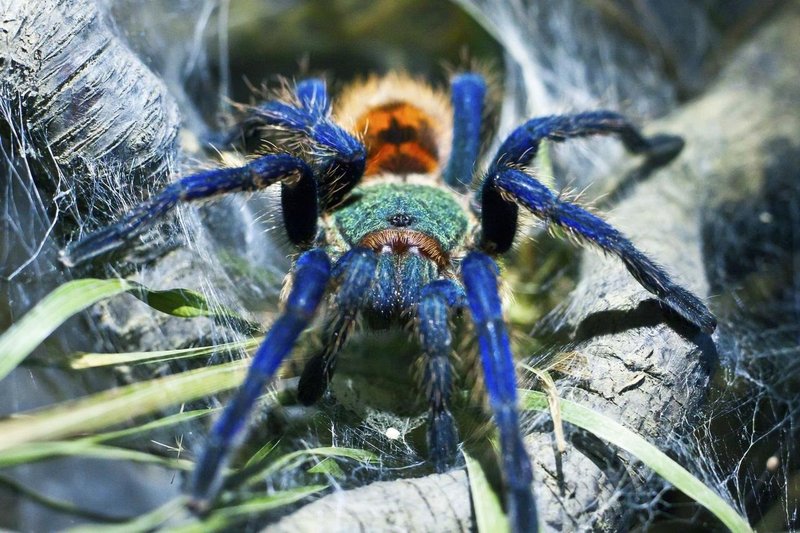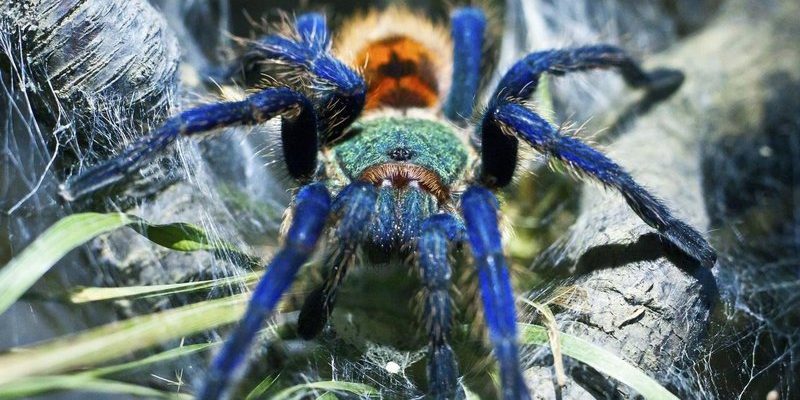
Imagine you’ve just adopted a greenbottle blue tarantula. You want to give it the best care possible, right? Understanding how long they live and how they grow will help you provide the right environment and support for your new eight-legged friend. So, how long can you expect your greenbottle blue tarantula to stay around? Let’s explore!
Understanding the Lifespan of a Greenbottle Blue Tarantula
The greenbottle blue tarantula, or *Ceratogyrus marshalli*, typically has a lifespan that varies based on a few factors. Generally, these tarantulas can live anywhere from 5 to 10 years in captivity. However, under ideal conditions, some may even exceed the 10-year mark. Think of it like a pet turtle; with the right care, they can stick around for a while.
In the wild, their lifespan is usually shorter, largely due to threats from predators and environmental factors. So, if you’re keeping one as a pet, providing a safe and loving habitat can significantly help extend its life. It’s like giving them a cozy home where they can feel secure and thrive.
Factors Affecting Lifespan
The lifespan of a greenbottle blue tarantula can be influenced by several key factors. One of the most significant is environmental conditions. Keeping the humidity and temperature just right can seriously impact your tarantula’s health and longevity.
- Humidity: This species thrives at a humidity level of around 60-70%. Too dry, and they could suffer, too wet, and you might face mold issues.
- Temperature: Ideally, you want to maintain a temperature between 75°F and 85°F. A warm climate mimics their natural habitat and keeps them happy.
- Diet: Feeding them a balanced diet of crickets and other insects can promote growth and health. Just like you, they need nutrients to thrive!
If you’re taking steps to ensure these elements are balanced, you’re already on the right path to a long, happy life for your spider buddy.
Growth Stages of Greenbottle Blue Tarantulas
Because you’re likely interested in how they grow, let’s break down the growth stages of a greenbottle blue tarantula. They go through a few distinct phases, and the changes can be quite remarkable.
– Spiderling Stage: When they hatch, they are tiny—about the size of a dime. They grow quickly, but they’re very vulnerable. During this stage, they need careful handling and the right diet to ensure they stay healthy.
– Juvenile Stage: As they grow, they enter the juvenile stage, which can last several years. This is when their beautiful blue coloration starts to develop. They begin to show more of their personality, and you can often see them more actively exploring their habitat.
– Adult Stage: Once they reach adulthood, which typically happens around 3-4 years of age, their growth mostly levels off. They may still molt, but they won’t grow much larger. Adults can have impressive sizes, sometimes as big as 5-6 inches across!
Understanding these stages will help you provide an environment that matches their needs. You might find it interesting how each phase brings a new set of challenges and joys.
Mating and Lifespan Implications
Mating can also play a role in the lifespan of greenbottle blue tarantulas. An interesting fact you might not know is that female tarantulas can sometimes live longer than males due to their different reproductive strategies.
– Males: After reaching maturity, males often live just 1-3 years longer before they seek a mate. This can be stressful and taxing on their bodies.
– Females: On the other hand, females can live significantly longer, sometimes up to 20 years in captivity, especially if they avoid mating. It’s a bit of a gamble for the males, while the females can focus on longevity.
This difference in lifespan is like a race where the males push hard to reproduce, while females take a more strategic approach to life. Fascinating, right?
Caring for Your Greenbottle Blue Tarantula
To ensure your greenbottle blue tarantula lives a long, healthy life, proper care is essential. Here are some key tips to keep in mind:
- Enclosure: A 10-gallon tank is typically sufficient for a single spider. Make sure it has secure ventilation and is escape-proof!
- Substrate: Use a substrate that retains moisture but allows for burrowing. Coconut fiber is a popular choice.
- Hiding Spots: Providing hideouts or decorations can make your spider feel safe and secure.
Remember, as with any pet, your attention and care will play a significant role in your tarantula’s happiness and lifespan. It’s like being a good parent—your love and dedication can make all the difference!
Signs of Aging in Greenbottle Blue Tarantulas
Just like us, tarantulas show signs of aging. Knowing these signs can help you understand when your pet may need extra care.
– Slower Movement: As they age, they may become less active than in their youth. This can be normal, but keep an eye on their overall health.
– Molting Changes: You might notice they’re molting less frequently. This is a common sign of aging in tarantulas.
– Color Changes: Aging tarantulas might lose some of their vibrant colors and become a bit duller over time.
Keeping track of these signs can help you adapt your care for your tarantula as it grows older. It’s all about being proactive and attentive.
Final Thoughts on Greenbottle Blue Tarantula Lifespan and Growth
Caring for a greenbottle blue tarantula can be a rewarding experience. Understanding how long they live, their growth stages, and what impacts their lifespan will help you create the best environment possible. Your furry (or should I say, fuzzy) friend deserves the best care you can provide.
So, whether you’re just starting your journey as a tarantula owner or looking to improve your care techniques, remember that knowledge is power. By being informed, you can ensure that your greenbottle blue tarantula thrives for many years to come!

